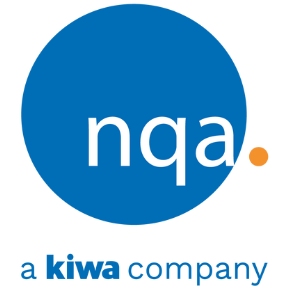It's Time to Reconsider your Context
Within the International Standards ISO 9001, ISO 14001, and ISO 45001, Clause 4.1, requires an understanding of the organizations’ context. This means that an organization shall determine relevant external and internal issues that affects its ability to achieve planned results and outcomes. ISO 9001 additionally requires consideration of the strategic plan. Whereas ISO 14001 requires consideration of physical environmental conditions such as severe weather events, including drought and climate change, and ISO 45001 considers the wellbeing of the “whole worker”; both physically and mentally.
Determining the organizational context and issues which affect context is a foundational requirement contributing to the effectiveness of these management systems. It has been observed that many organizations identify only superficial risks and opportunities when considering their context.
These issues are typically derived from internal operational knowledge and reflective of the operational team tasked with determining the context. The risks and opportunities related to these issues are certainly important, but are they considered as inputs to the strategic direction of the organization? What about external issues? Is there top management and other organizational representation involved with the determination of the Context, or is this simply an exercise for the “ISO Team”?
Understanding risks and opportunities
The international standards requirement regarding context demands a deeper understanding of risks and opportunities of issues within its context that affect the organization. Unfortunately, some organizations consider the ISO program as a subsystem and do not include all the necessary stakeholders into the group when setting this context cornerstone.
The resulting well-meaning team might miss or even guess higher-level organizational risks and opportunities and influential stakeholder needs, which often define the context in more detail. Without broad organizational representation or knowledge input, meaning the right people in the room, a comprehensive context determination is not possible.
Another area lacking attention within context deliberation is the environmental health and safety issues associated with an organization’s physical and operational environment. Organizations seeking conformance to ISO 14001 or ISO 45001 are sometimes more challenged when considering these EH&S risks and opportunities at the strategic level.
As previously mentioned, environmental conditions are required to be considered however climatic conditions are often considered as unchangeable or unavoidable and therefore must be adapted to. This type of approach risks eventually ignoring the climate as a part of its context. Worker wellbeing is usually considered but typically as a financial impact due to lost time injury.
With this approach, the injury rate becomes the metric which defines the context of safety. unfortunately, this approach ignores the opportunities to understand total worker impacts and the effects of their issues within the organizational context. The great resignation is in part a result of not correctly assessing the risks of the external issues affecting worker needs and expectations; to the point of their defection.
Working in new ways
The good news is that many companies and leadership teams are beginning to embrace modern governance approaches such as: sustainability, corporate social responsibility (CSR) and Environment, Social Governance factors (ESG). These concepts are challenging organizations to think about their context in new and arguably more comprehensive ways. Coincidentally, these new methods of context determination are aligned with the intent of the international standards.
When the pandemic struck, it quickly revealed the resilience of well-prepared organizations. Organizations that had imagined the possibility of not only the potential of a pandemic, but other severe impacting events, are succeeding through challenging times. Analysis reveals that these successful organizations consistently re-evaluated their context and developed and tested business continuity and similar response plans; even when there was not prior history of that imagined event. Another element observed is a strong connection to workers and their needs.
Organizations that have strong consultation and participation programs and truly understand the context of their workforce have developed and innovative solutions to address balance worker and organizational needs.
Prior to the pandemic, broad impacting events such as the chip shortage related to the March 2011 Tsunami in Japan provided scenarios and case studies to consider. Although that event seemed to have a greater effect on the auto industry, there were certainly lessons to be learned by all industries.
Seasonal wildfires in California also provide case studies for both environmental and safety as do hurricanes, droughts, floods, and snowstorms. Opportunities also are much easier to identify once strengths and weaknesses are clearly defined and assessed. Understanding the risks and opportunities associated with your context should not be a cursory exercise but rather a challenging exercise to identify and anticipate indirect risks and impacts to other business process not just the processes directly affected.
The true benefits to certification
To restate the point, organizations that effectively and comprehensively determined their internal and external issues that define their context have fared much better than those organizations that simply went through the motions to meet conformance to standards or never made the investment to imagine or consider its context in a meaningful way.
In conclusion, ISO standards are not a magic bullet and they never have been. However, adoption and adherence to requirements and intent of these management systems indeed appear to have provided a tremendous opportunity to create a framework and discipline for mitigating the impacts of risks and opportunities. Defining the Context of the organization is foundational and essential to an effective management system. I personally have observed through the audit process that organizations that have adopted ISO management systems with active top management involvement are successfully weathering the challenges and issues associated with their context.
Author - Randy Pittman, NQA EHS Business Unit Manager
